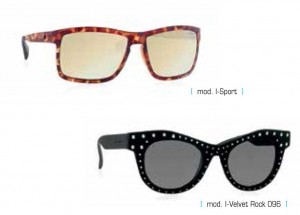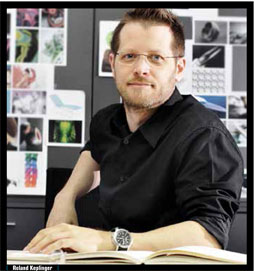By Paddy Kamen
 Historically, eyecare professionals (ECPs) had few ways to attract the public to their retail stores: a window display, local advertising, sponsoring a sports team, flyers, etc. What else could motivate a potential customer to walk into the store… designer brands, word of mouth? While these tried and true techniques may be effective in their own way, they are very limited in scope and sometimes costly. They are also, yawn, rather old school.
Historically, eyecare professionals (ECPs) had few ways to attract the public to their retail stores: a window display, local advertising, sponsoring a sports team, flyers, etc. What else could motivate a potential customer to walk into the store… designer brands, word of mouth? While these tried and true techniques may be effective in their own way, they are very limited in scope and sometimes costly. They are also, yawn, rather old school.
Then along comes Transitions Optical, Inc., a company that has dramatically influenced eyewear consumers and driven them into optical stores. How? Through advertising! Today, fully 40 per cent of people surveyed say they are intending to purchase Transitions® lenses. And this year, Transitions is advertising to the tune of 244 million impressions on Canadian television alone. And get this: brand awareness among the general population is 56 per cent!
The TV ads, found on CTV, CBC and specialty networks including HGTV, Discovery, TSN and many others, are part of a comprehensive campaign across Canada and the U.S., unfolding from February to December 2013. Your patients who watch Breakfast Television and Canada AM will be better informed of their choices in adaptive eyewear as a result of this biggest-ever Transitions advertising campaign.
Online folks (and who isn’t online these days?) will be seeing the Transitions campaign on BBC.com, AOL, Corus Entertainment, CBC, The Globe and Mail,Rogers, Torstar and Postmedia Network. There’s also a social media component that we’ll get to in a bit.
Matt Dorling, the new director for Transitions Optical in Canada (he is also responsible for retail in the U.S.), says the main objective of the campaign is to convey the enhanced experience consumers can get from wearing any of the Transitions family of products.
There is a Transitions lens for every consumer, and two main product categories: Transitions everyday adaptive lenses and Transitions adaptive sunwear. “People want their lenses to do more and they want a product that enhances the way they experience everyday life,” explains Dorling. “If they want the absolutely clearest lens indoors while still having sun protection when outdoors, the Transitions VI lens is a perfect choice; the person who is outdoors a lot and wants maximum relief from eye strain, in addition to a lens that activates behind a windshield, will prefer the Transitions XTRActive® lens. And those who enjoy the superior visual experience of a polarized lens will find that the Transitions Vantage™ lens gives them the desired advantages.”
The sunwear category includes a wide range of Rx and non-Rx products, including sun lenses, sunglasses (lenses and frames sold together) and motorcycle face shields. Designed specifically to meet the unique visual demands of driving, Transitions Drivewear® sun lenses are the only polarized photochromic to activate behind the windshield of a car; combining NuPolar® polarization and advanced photochromic dyes, which respond to both visible light and UV light.
The advertising campaign sparks an interest in Transitions XTRActive lenses and Transitions Vantage lenses – and encourages consumers to visit their ECP to have an informed discussion. And because covering all the bases is just the way Transitions does business, the company goes to great lengths to facilitate that discussion. For ECPs, Transitions offers training and education through the Transitions Learning Portal at Transitions.com/learn. Dorling says the Learning Portal is being well used by Canadian professionals, with about 450 ECPs registered and actively using the system at any one time. While much of the content is specifically about selling the Transitions family of products, accredited continuing education courses are also available.
The discussion between ECPs and patients is also facilitated when consumers visit the Transitions.com website. Since January, traffic to Transitions.com has risen by over 200 per cent. The most viewed pages on the site are the ‘products’ page and the ‘where to buy’ page, which further reinforces the fact that consumers want to take action and obtain Transitions lenses.
Another exciting aspect to the campaign is the company’s partnerships with celebrity ambassadors to enhance its social media efforts. According to Dorling, these big names in their fields – country music artist Darius Rucker; baseball legend Cal Ripken Jr.; celebrity chef Robert Irvine; and National Geographic photographer Annie Griffiths and writer Andrew Evan – will be using social media channels to talk about their individual experiences with Transitions lenses. “This gives the campaign a nice element of authenticity because not all the information is coming from us, but is based on our ambassadors’ view of every day experiences wearing Transitions lenses” notes Dorling.
Social media connections with consumers are also fostered through the Transitions Facebook page (Transitions lenses) and Twitter account (@Transitions), through which the company shares information and videos about their family of products, in addition to eye and overall health tips and photos from outreach events.
The total effect of the campaign, with social media, online ads, celebrity involvement and television, amounts to what Dorling calls a ‘surround sound’ effect. And the impact is further enhanced with in-store information and education aids in the form of video loops, dispensing mats, brochures and posters, which are available at TransitionsRewards.com. These aids will no doubt help spark recognition in the consumer’s mind and make it easier for practitioners to start conversations about Transitions lenses.
Dorling recommends that ECPs take the lead in helping the patient choose the best Transitions lens solution by asking questions about lifestyle, work and outdoor activities. “It’s important that patients feel they’re being drawn out and listened to with respect to their needs. Our training gives the ECP suggested language to use when describing the products; it’s best when it is not technical but instead built around the patient experience and finding the best solution for that wearer.”
Transitions sales reps are also available for customized seminars and training for ECPs and their staff. “We’re expanding the sales team inCanadaand will have more reps in the field. This is another way we’re expressing our passion for helping the ECP to be successful in capitalizing on growing consumer awareness of the Transitions brand,” says Dorling.
It’s definitely a whole new world for ECPs as a result of Transitions Optical’s advertising campaigns. You’re no longer thrown on your own resources but rather supported in a myriad of ways. Transitions has made success very easy, creating a value-added product and driving well-informed consumers right to your door. They’ve really changed the game, making you and your patients the winners.
 As one of the top four global sunglass brands, which sold over four million pairs of polarized sunglasses last year, Polaroid has arrived in Canada.
As one of the top four global sunglass brands, which sold over four million pairs of polarized sunglasses last year, Polaroid has arrived in Canada.








